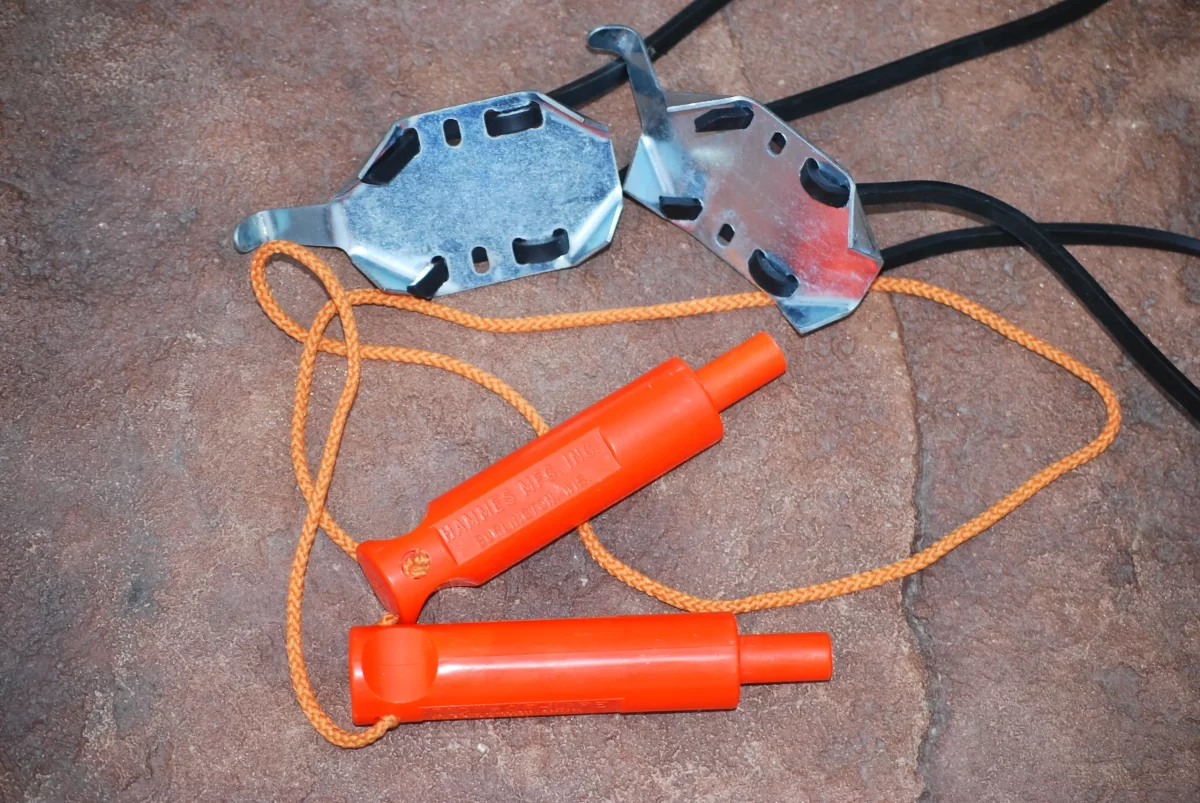Ice Fishing Preparation & Safety

* This page contains affiliate links. The Great Lakes Fisherman may earn a commission on items purchased through these links. For more on this, please click here.
It’s that time of year when upper Midwest fisherman transition from the soft water to the hard water. For those that aren’t familiar with the term, “hard water” is fisherman speak for ice. This is a true passion for many, with some actually preferring ice fishing to any other.
While ice fishing can be an enjoyable way to spend the cold winter months, proper preparation is necessary to ensure a safe and comfortable day on the ice. Whether you are new to ice fishing or a seasoned veteran, proper preparation is the key.
Ice Thickness and Quality
By far, the most important aspect of ice fishing from a safety perspective is ensuring you are walking or riding on stable ice. While it is virtually impossible to know the stability of ice under the entire lake, there are some things that can be done to greatly increase the odds of breaking through.
1. Be Aware of Moving Water
Flowing water contains more energy than still water. This means that it doesn’t freeze as easily. Make sure you are aware of the locations of any streams, creeks, canals or rivers that may flow into or out of the lake you are fishing. Areas around these inlets or outlets will likely have thinner ice than the rest of the lake.
2. Be Aware of Spring Water
Another thing to mindful of is spring water. Spring water, that is, water that seeps out of the earth, tends to hold in the high 40s to lower 50s. Lakes that have active springs feeding them will tend to have thinner ice in areas around these underwater springs.
3. Check the Ice Before Venturing Out
Be sure to check the ice before getting away from shore. Make sure that you drill or spud a hole. While this doesn’t necessarily represent the whole body of water, it is a good first indication.
4. Don’t Ice Fish Alone
Though tempting it may be, fishing alone can be dangerous. It is wise to go ice fishing with a friend or family member. If you must go alone, be sure to go somewhere where there are other ice fisherman so that in the event of an emergency, you have access to help from others.
5. Don’t Venture Far from the Pack
Staying close to other ice fisherman is important for a couple of reasons. First, if you are new to a body of water, it provides an indication of where the safer ice is. In addition, should you have an emergency, help is not far away.
Safety Gear
There are a few items that every ice fisherman should have when it comes to safety gear. Here is a short list.
1. Ice Awls
Ice awls are essentially ice picks that can be driven into the ice by hand to help provide leverage to pull yourself out should you fall through the ice. Many are designed so that the picks are retracted into a plastic sleeve or housing to prevent you from accidentally spiking yourself. When the awls are slammed downward and into ice, the plastic retracts allowing the steel to penetrate the ice. This allows you to pull yourself out without assistance.
2. Ice Cleats
Walking on a smooth, ice covered surface can be very difficult. And if that ice is wet, not only can it be nearly impossible to walk, but there is serious danger of a slip hazard. This is where ice cleats come in handy. Ice cleats are to your boots what snow chains are to tires. They provide spiked pressure points on the soles of your boots that allow you to walk on the slickest of ice, slip-free.
3. Carry a Whistle
This may seem simple, but a whistle worn around your neck will help you alert others should you have an emergency that requires help. Nothing fancy – but the louder the better.
4. Dress in Proper Attire
An often overlooked safety issue for ice fishermen is frost bite. When you are ice fishing, your hands will eventually get wet with water that is hovering around 32ºF (0ºC). Combine this with even colder winds that blow unobstructed across the lake, and you have a recipe for some dangerously cold fingers. Appropriately rated apparel, including good boots and gloves, are a must for a worry free and comfortable day on the ice.
“But”, you may say, “I have a good shanty and a heater, so I don’t need to worry about having all that stuff on.” As the old saying goes, it is better to have it and not need it, than to need it and not have it. Removing an extra layer is easy if you are getting too warm. But you can put it back on if the temperature drops, the wind picks up, or your heater runs out of fuel.
Following the above tips will help ensure that you have a safe and comfortable day out on the hard water!
